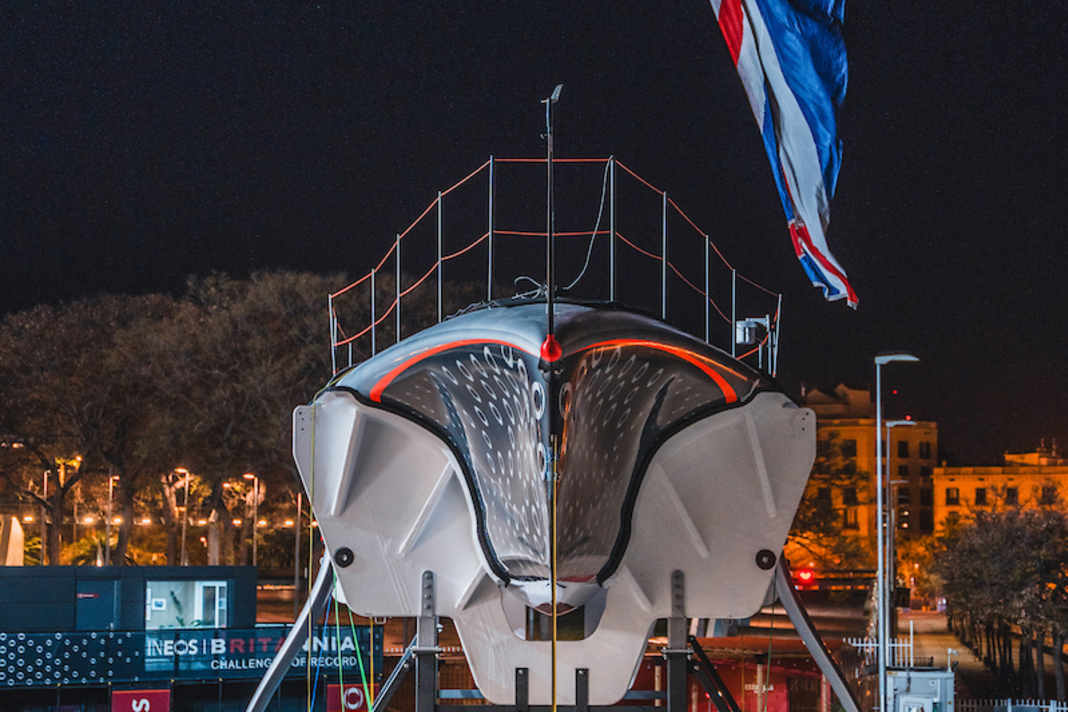37th America's Cup: The British unveil "RB3" - are all good things come in threes?






After two Cup campaigns with boats that were not fast enough, Sir Ben Ainslie and his team Ineos Britannia want to go for it in their third attempt under the British flag. On Saturday, they presented their new AC75 in Barcelona under the working title "RB3". The official christening and first water tests are to follow soon. Around two and a half years of work went into the British spoiler. "RB3" was brought from the British shipyard in Northamptonshire to the new America's Cup metropolis of Barcelona just a few weeks ago.
America's Cup: two and a half years of work for "RB3"
Sir Ben Ainslie, the most successful Olympic sailor in the sport's history with four gold medals, said: "This is a great day for the team. We've kept 'RB3' under lock and key for so long that it's almost surreal to get her out of the shed here in Barcelona and see her in public. Thousands of hours of work have gone into this boat. It's great to finally show it to the world. The campaign is really picking up speed now. We are looking forward to launching the 'RB3' and getting out on the water very soon."
"RB3" has begun its lifecycle within the Ineos Britannia design and engineering team, based at the Mercedes-AMG Petronas F1 Team's site in Brackley, Northamptonshire. Ineos Britannia has partnered with the Formula 1 team's applied science department to bring together bright minds from the high performance yachting and automotive industries for the America's Cup campaign.
The boat was initially built at Carrington Boats in Hythe in Hampshire. It was then transported by the team to Turweston in Northamptonshire. Structural and load tests were carried out there. On 2 April, "RB3" left Turweston on its journey to Spain, where the boat arrived at Ineos Britannia headquarters in Barcelona on 6 April.
We will only really know where we stand when we are officially sailing against each other" (Johannes Mausolf)
Ineos Britannia is the fourth team in the 37th America's Cup to present its boat. The boats of the US team American Magic and the French team Orient Express are still unknown to the public 124 days before the start of the eagerly awaited third and final pre-regatta. Assessments of the speed potential of the representatives of the new AC75 generation will be available beforehand, but the first official regatta at the latest should provide veritable insights into which teams have done their homework best over the past three years.
"We won't really know where we stand until we officially sail against each other. The Cup protocol doesn't allow that until later. The last pre-regatta for the Cup starts on 22 August. But the boats will be sailing before then and we will have a good idea of where we stand with our boat," Johannes Mausolf told YACHT. The 40-year-old performance engineer from Hanover is celebrating his tenth anniversary with the British team this spring and is part of the British design and construction team, which is led by German design coordinator Martin Fischer.
Design conspicuousness: strongly pronounced skeg
A striking feature of the British "RB3" at first glance is the pronounced skeg in front of the rudder blade (not yet installed in the first pictures). It should function very intensively as an end plate between the two sides of the hull during the transition to foiling. As with all new boats, the steeply sloping stern section is also striking. Less structure has obviously been installed here too, as the boats now sail without backstays.
It is possible to observe what could already be experienced in Valencia with the International America's Cup Class (IACC), which was active between 1992 and 2007: The designs of the teams' boats shown so far are more similar than in the previous 36th America's Cup, because the development of the second AC75 generation is moving towards the end of the funnel within the framework of the rules. It remains exciting to see whether one team or another has nevertheless discovered a loophole in the rules that they can use to their advantage with a smart design.
The British will be putting everything on the line, as this will be Ben Ainslie's third attempt after two less successful Cup campaigns under the British flag, with the declared intention of finally bringing the silver jug back to the mother country. In 1851, the Americans won the inaugural Cup off the British Isle of Wight and subsequently gave the ornate silver jug its name. British teams have never been able to win the America's Cup, which was born in their country.

